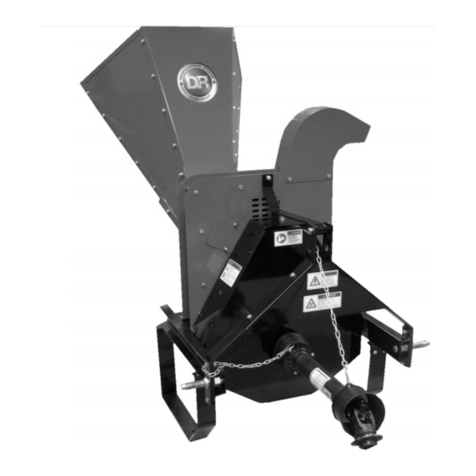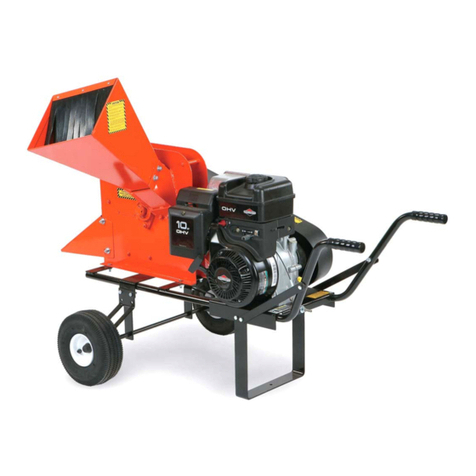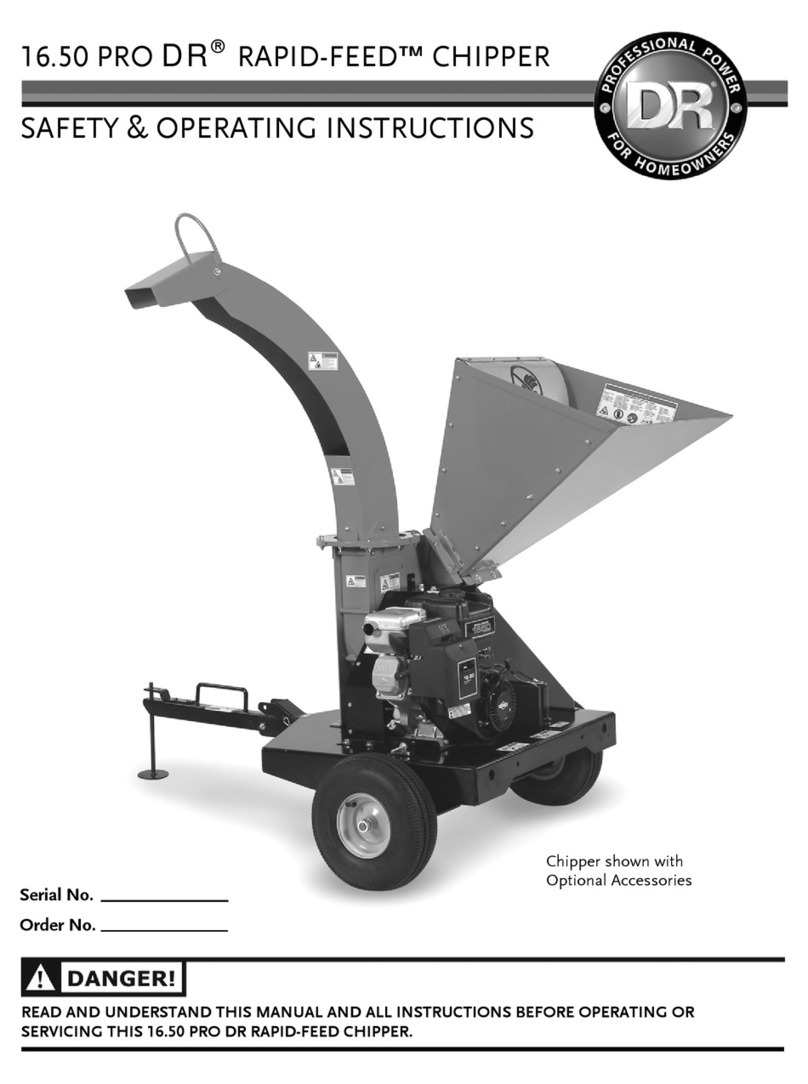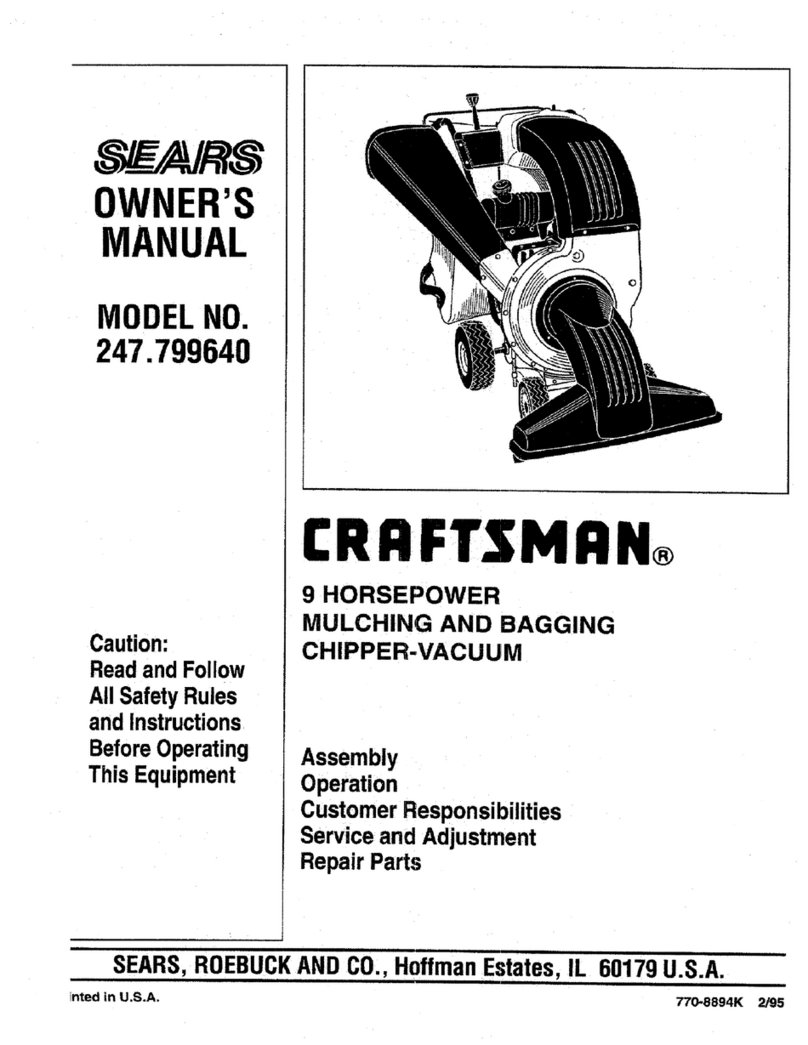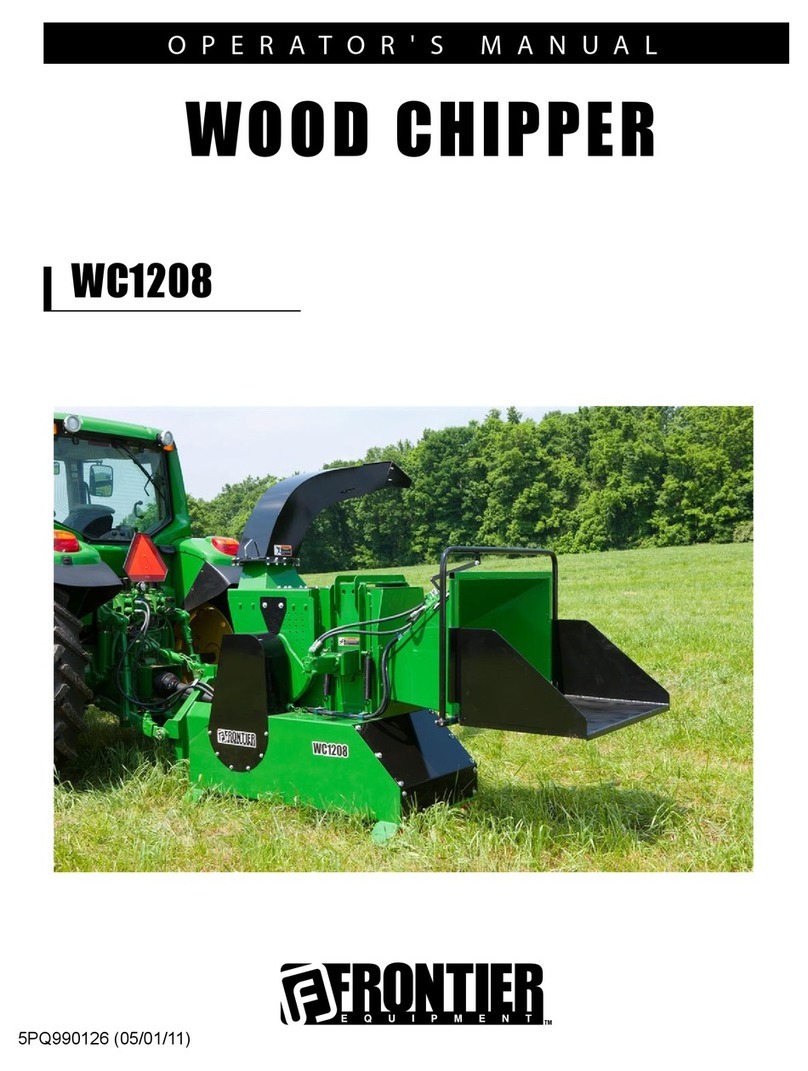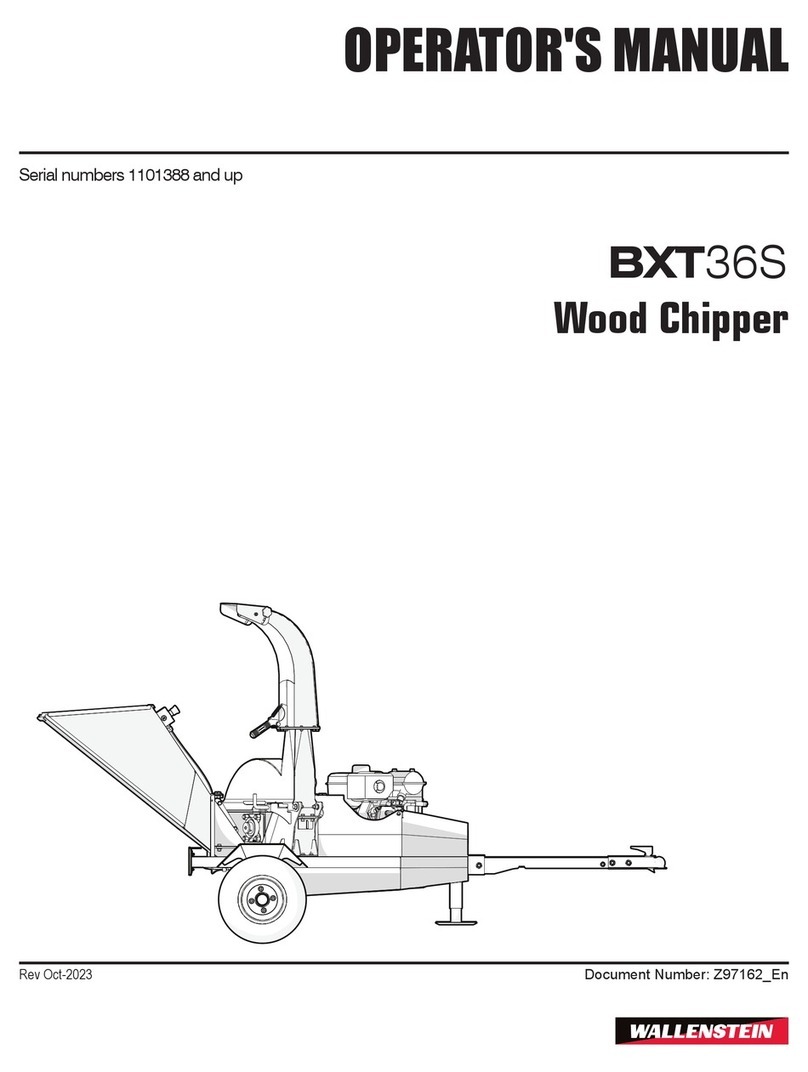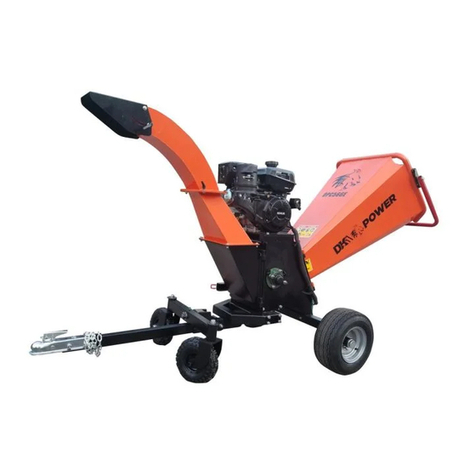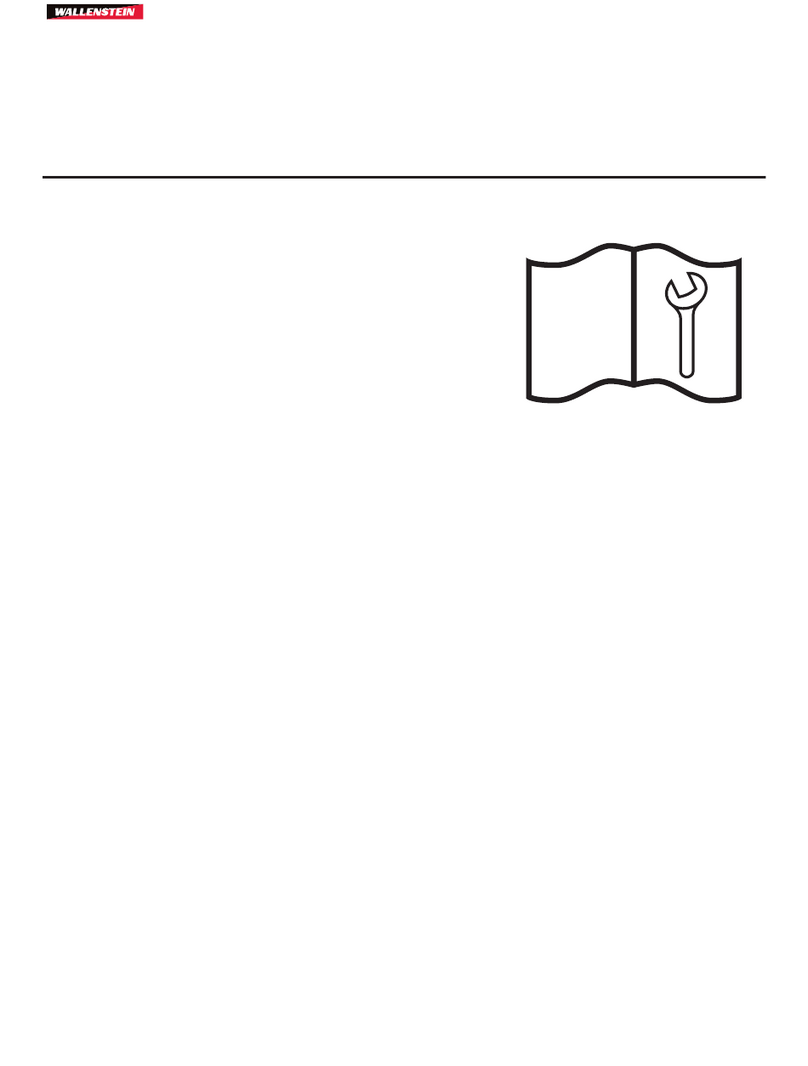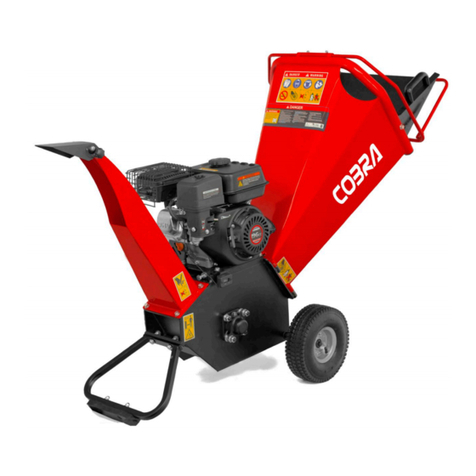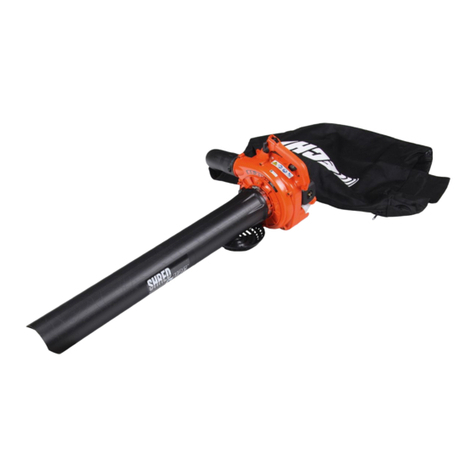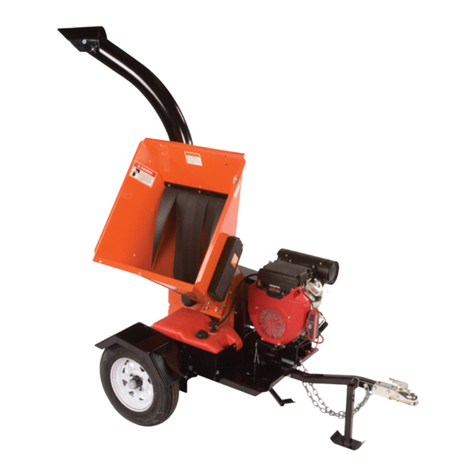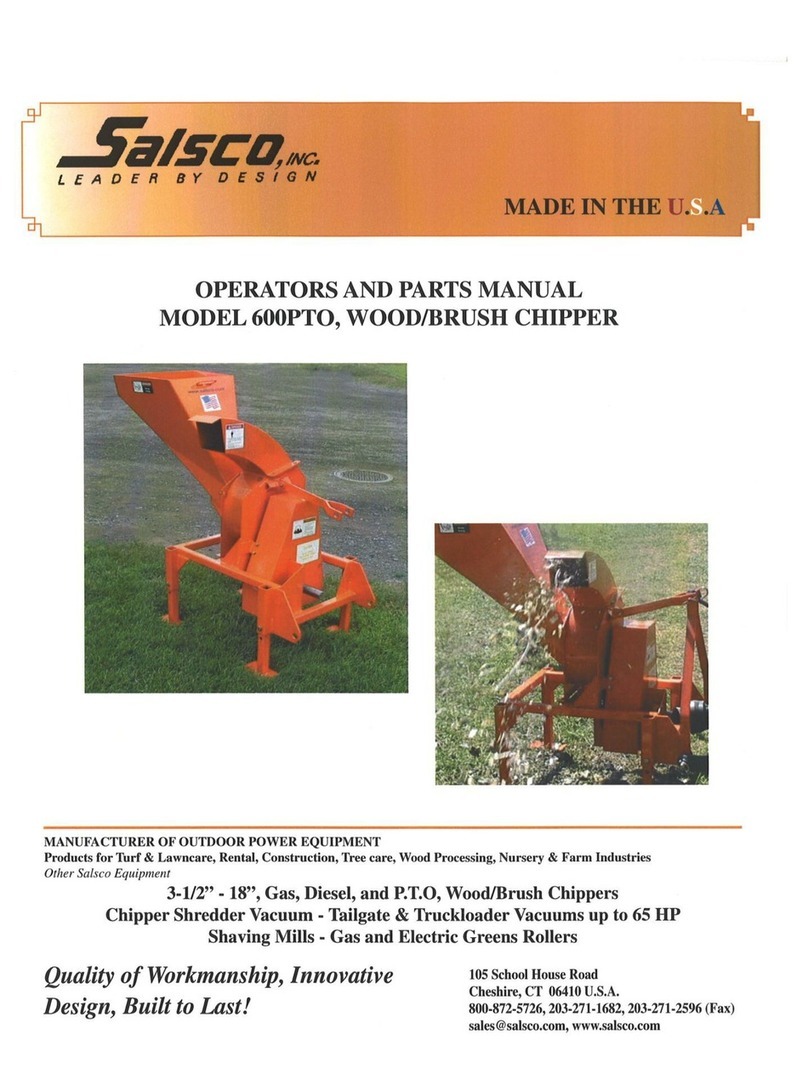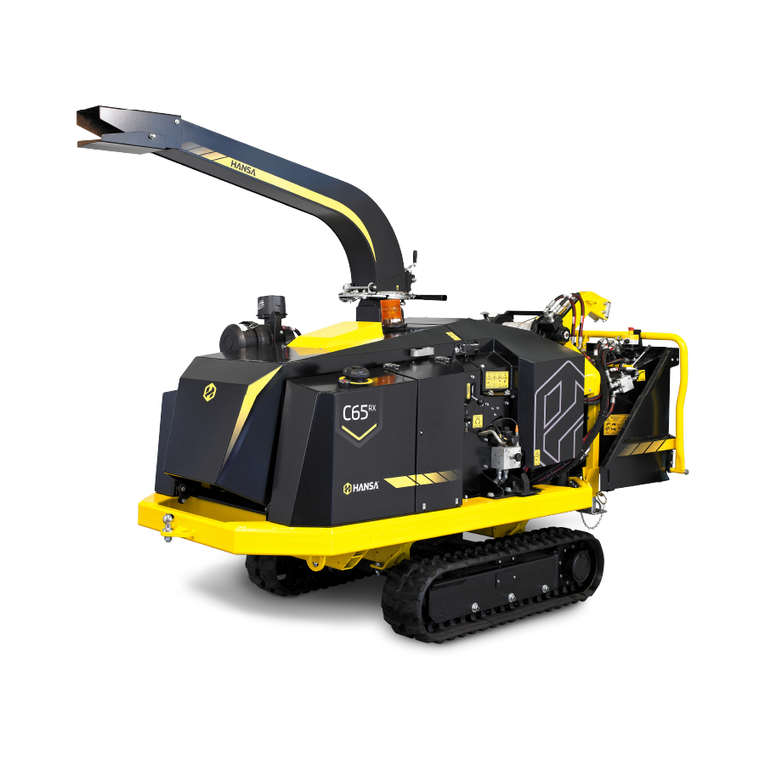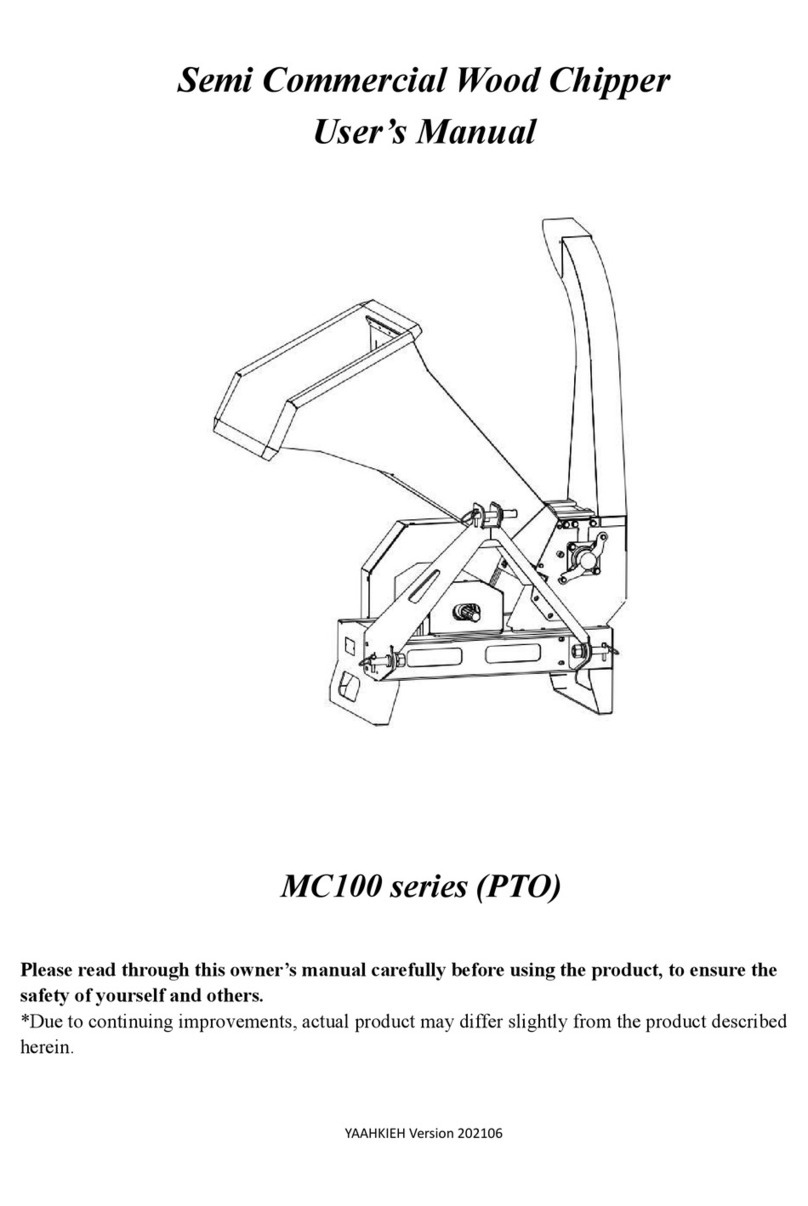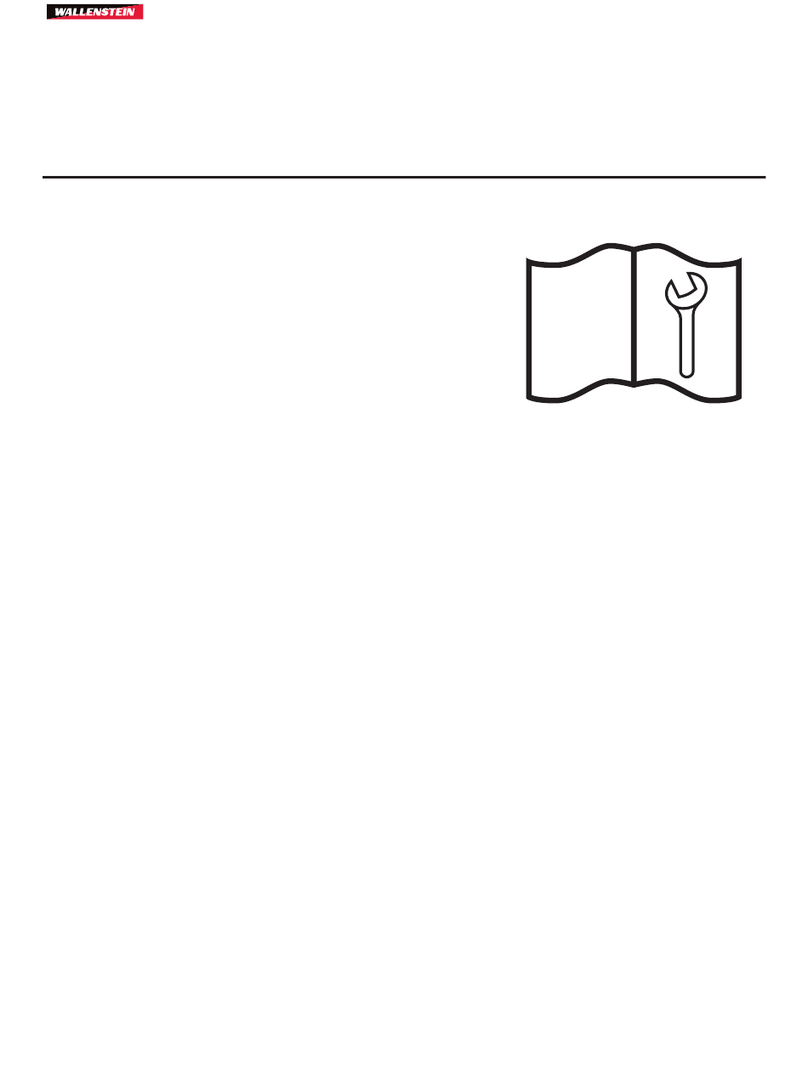
CONTACT US AT www.DRpower.com 5
Protecting Yourself and Those Around You
Safety for Children and Pets
This is a high-powered machine, with moving parts operating with high energy at high speeds. You must operate the machine
safely. Unsafe operation can create a number of hazards for you, as well as anyone else in the nearby area. Always take the
following precautions when using this machine:
Always wear protective goggles or safety glasses with side shields while chipping to protect your eyes from possible thrown
debris.
Avoid wearing loose clothing or jewelry, which can catch on moving parts or the material fed into the chipper hopper.
We recommend wearing gloves while chipping. Be sure your gloves fit properly and do not have loose cuffs or drawstrings.
Wear shoes with non-slip treads when using your chipper. If you have safety shoes, we recommend wearing them. Do not
use the machine while barefoot or wearing open sandals.
Wear long pants while operating the DR SELF-FEEDING Chipper.
Use ear protectors or ear plugs rated for at least 20 dba to protect your hearing.
Never allow people who are unfamiliar with these instructions to use the chipper. Allow only responsible individuals who are
familiar with these rules of safe operation to use your machine.
Never place your hands, feet, or any part of your body in the chipper hopper, discharge opening, or near or under any moving
part while the machine is running. Keep area of discharge clear of people, animals, buildings, glass, or anything else that will
obstruct clear discharge, cause injury, or damage. Wind can also change discharge direction, so be aware. If it becomes
necessary to push material into the chipper hopper, use a small diameter stick, not your hands.
Keep bystanders 100 feet away from your work area at all times. Wood chips exit the chipper at great speeds. To be safe, do
not operate the machine near small children or pets, and never allow children to operate the chipper. Stop the engine when
another person or pet approaches.
Never use the machine without ensuring that all guards and shields are in place, including the chipper hopper, discharge
chute and blowback shield.
Do not operate the engine with the air cleaner or the carburetor air intake cover removed. Removal of such parts could create
a fire hazard. Do not use flammable solutions to clean the air filter.
Always operate the machine from the operator zone (see chapter 4). Never pass or stand on the discharge side of the
machine when the engine is running or the flywheel is turning.
Never try to pick up, move, or transport the machine while the engine is running or the flywheel is turning.
The muffler and engine become very hot and can cause a severe burn; do not touch.
Clear the area of objects such as wire and rope, etc. Inserting these objects into the chipper hopper could damage the
flywheel and/or cause injury.
Never, under any conditions, remove, bend, cut, fit, weld, or otherwise alter standard parts on the DR SELF-FEEDING
Chipper. This includes all shields and guards. Modifications to your machine could cause personal injuries and property
damage and will void your warranty.
Tragic accidents can occur if the operator is not alert to the presence of children and pets. Children are often attracted to the
machine and the chipping activity. Never assume that children will remain where you last saw them. Always follow these
precautions:
Keep children and pets at least 100 feet from the working area and under the watchful care of a responsible adult.
Be alert and turn the machine off if children or pets enter the work area.
Never allow children to operate the DR SELF-FEEDING Chipper.
